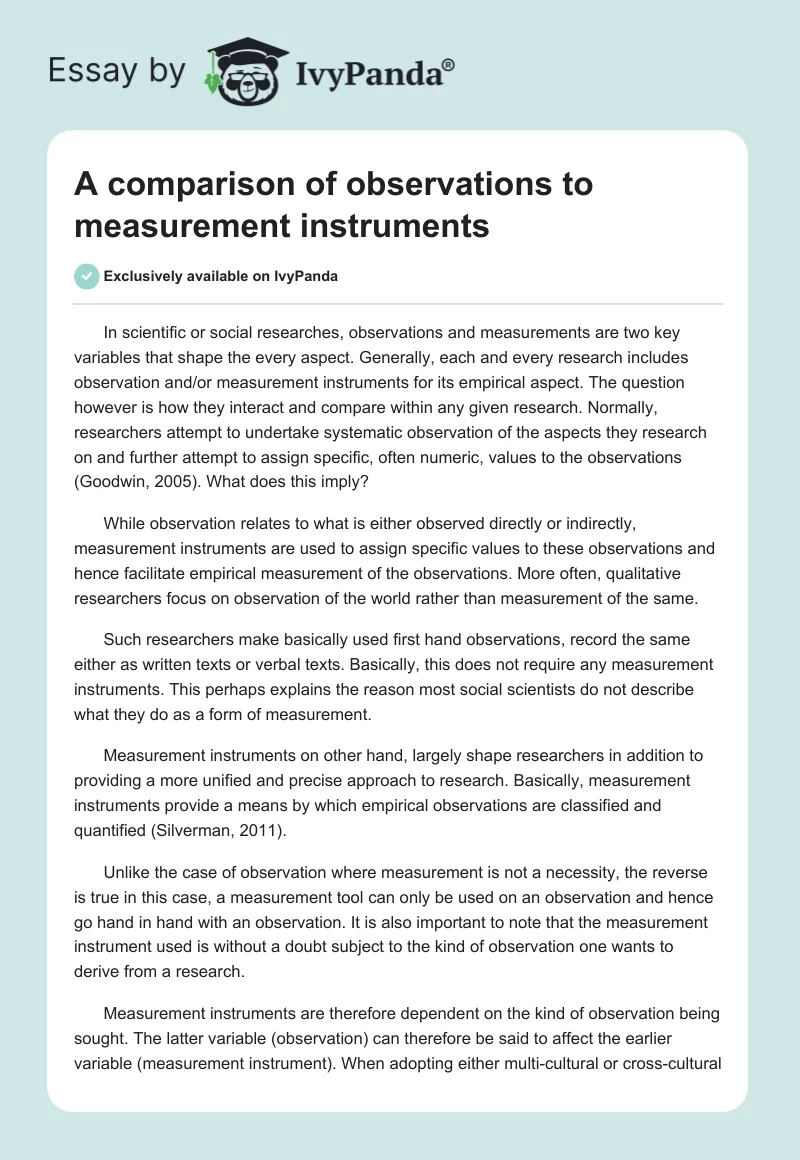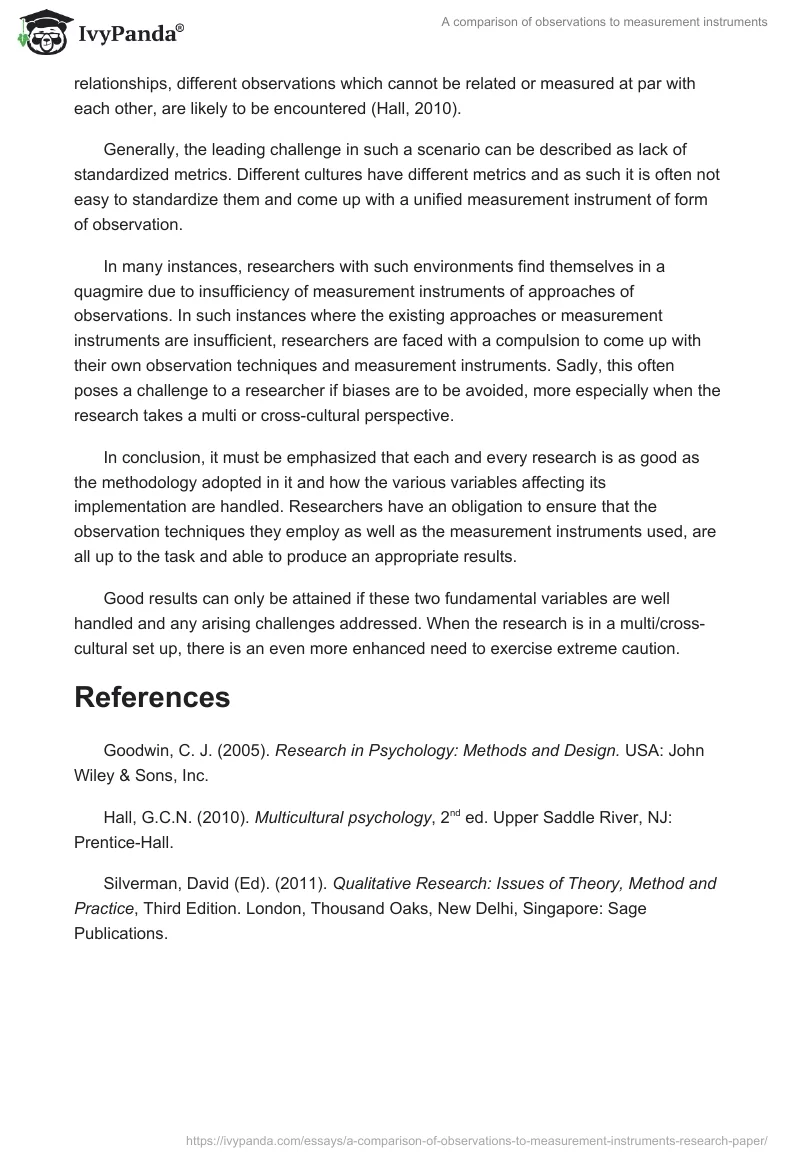In scientific or social researches, observations and measurements are two key variables that shape the every aspect. Generally, each and every research includes observation and/or measurement instruments for its empirical aspect. The question however is how they interact and compare within any given research. Normally, researchers attempt to undertake systematic observation of the aspects they research on and further attempt to assign specific, often numeric, values to the observations (Goodwin, 2005). What does this imply?
While observation relates to what is either observed directly or indirectly, measurement instruments are used to assign specific values to these observations and hence facilitate empirical measurement of the observations. More often, qualitative researchers focus on observation of the world rather than measurement of the same.
Such researchers make basically used first hand observations, record the same either as written texts or verbal texts. Basically, this does not require any measurement instruments. This perhaps explains the reason most social scientists do not describe what they do as a form of measurement.
Measurement instruments on other hand, largely shape researchers in addition to providing a more unified and precise approach to research. Basically, measurement instruments provide a means by which empirical observations are classified and quantified (Silverman, 2011).
Unlike the case of observation where measurement is not a necessity, the reverse is true in this case, a measurement tool can only be used on an observation and hence go hand in hand with an observation. It is also important to note that the measurement instrument used is without a doubt subject to the kind of observation one wants to derive from a research.
Measurement instruments are therefore dependent on the kind of observation being sought. The latter variable (observation) can therefore be said to affect the earlier variable (measurement instrument). When adopting either multi-cultural or cross-cultural relationships, different observations which cannot be related or measured at par with each other, are likely to be encountered (Hall, 2010).
Generally, the leading challenge in such a scenario can be described as lack of standardized metrics. Different cultures have different metrics and as such it is often not easy to standardize them and come up with a unified measurement instrument of form of observation.
In many instances, researchers with such environments find themselves in a quagmire due to insufficiency of measurement instruments of approaches of observations. In such instances where the existing approaches or measurement instruments are insufficient, researchers are faced with a compulsion to come up with their own observation techniques and measurement instruments. Sadly, this often poses a challenge to a researcher if biases are to be avoided, more especially when the research takes a multi or cross-cultural perspective.
In conclusion, it must be emphasized that each and every research is as good as the methodology adopted in it and how the various variables affecting its implementation are handled. Researchers have an obligation to ensure that the observation techniques they employ as well as the measurement instruments used, are all up to the task and able to produce an appropriate results.
Good results can only be attained if these two fundamental variables are well handled and any arising challenges addressed. When the research is in a multi/cross-cultural set up, there is an even more enhanced need to exercise extreme caution.
References
Goodwin, C. J. (2005). Research in Psychology: Methods and Design. USA: John Wiley & Sons, Inc.
Hall, G.C.N. (2010). Multicultural psychology, 2nd ed. Upper Saddle River, NJ: Prentice-Hall.
Silverman, David (Ed). (2011). Qualitative Research: Issues of Theory, Method and Practice, Third Edition. London, Thousand Oaks, New Delhi, Singapore: Sage Publications.


